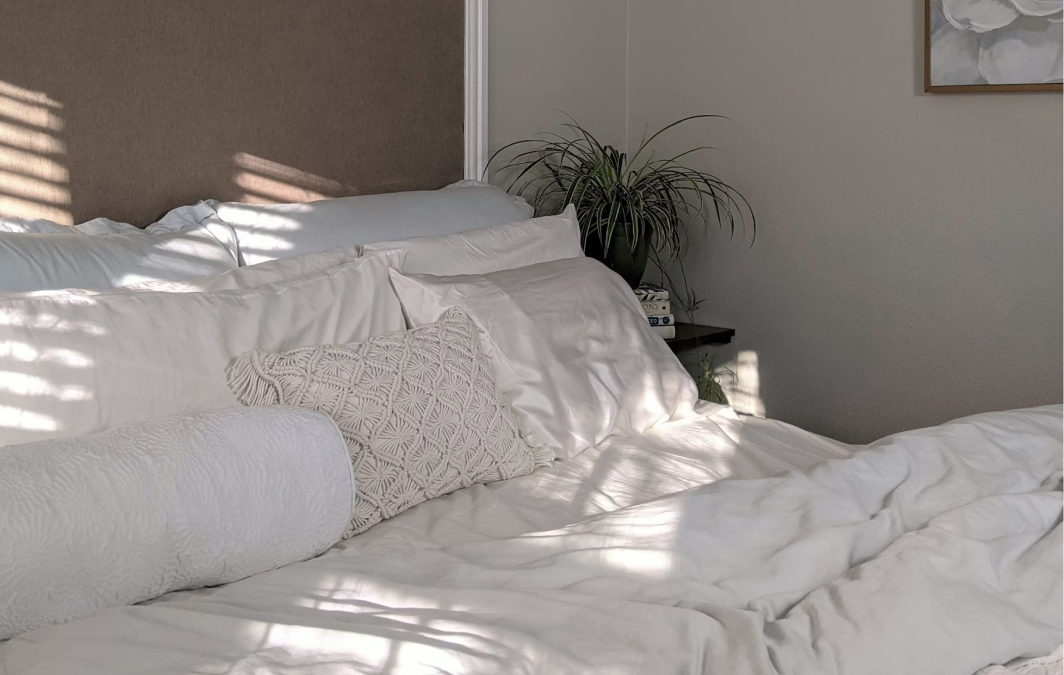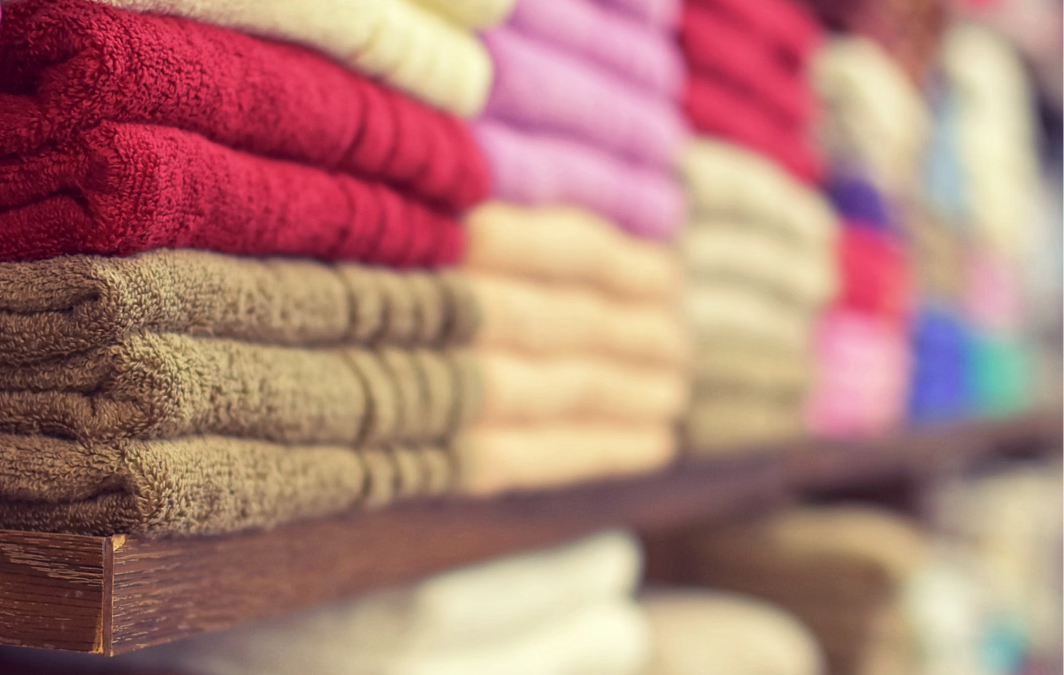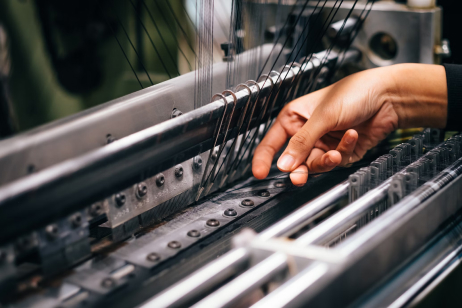The ultimate guide to linen care: Keeping your high-end linens looking new
Investing in high-quality linens, whether for your bed, bath, or outdoor spaces, brings a touch of luxury and comfort to your home. However, to ensure these premium fabrics retain their beauty and softness over time, proper care is essential. In this comprehensive guide, we’ll explore the best practices for maintaining your luxury linens, from washing and drying to storing and handling.
Bed Linen Care
Always pre-wash new linens before using. As fine fabrics are generally not pre-washed, this first wash is important for setting the threads, preserving the fabric’s beauty, and prolonging its life. Be sure to unfold fully, set the machine to include a cold pre-soak, and use minimal liquid detergent. Following the first wash, refer to our Machine-Wash Instructions below.
Use of a fabric softener (liquid or dryer sheets) is not recommended for any fine linens, as it coats and weakens natural fibers. Your luxury linens will soften naturally with frequent use and additional washings.
We recommend using three sets of bed linens in rotation. One on the bed, one in the wash, one in the linen closet. This will allow each set a rest from use and a rest from wash. Similarly, we recommend that you wash matching linens (e.g. sheets and pillowcases) together, as each piece should be cared for similarly regardless of whether or not it is soiled (or even, used) to help maintain color consistency and brightness.
Remove jewelry, watches, or other accessories that may damage fibers while sleeping. The added abrasion can—over time—break down the fibers, possibly resulting in pilling.
Take care when drawing up your sheets or shimmying a pillow into its case: pull from below the hem—not on or above the hemstitch, lace detail, or embroidery—so as not to subject these delicate threads to undue stress. Avoid laundering fine linens with other items, especially those containing polyester, and items made of heavy material, rivets, buttons, zippers, etc., (for example, denim jeans) as these can damage fibers and fabric.
Avoid overloading the washing machine, as this can cause unnecessary abrasion to the fabric.
Laundering Instructions For Bedding

Machine Washing
Always check the care label before laundering, and separate linens into light and dark colors.
- Most linens can be washed on a gentle cycle in warm water with a cold-water rinse.
- Pre-treat any stains before washing; do not use bleach (bleaching may weaken the fabric and cause yellowing).
- Use a mild liquid detergent without added bleach, optical brighteners, whiteners, or fabric softeners.
- Do not pour the detergent directly on textiles; rather, add it to the water as the wash tub fills or dilute detergent with water, then add linens.
- Do not use bleach—bleaching may weaken fibers and cause them to yellow.
TIP: Unless linens are very soiled, you need only use half the recommended amount of detergent.
Drying
Natural fibers will wrinkle, but there are steps you can take while drying linens to minimize wrinkling. Line drying linens in soft, outdoor sunlight is ideal—it is the gentlest, and the sun provides natural bleaching— though this is not always practical.
- To machine dry, gently shake out and smooth damp linens before placing in the dryer (unraveling any items that may have twisted in the wash cycle). Do not use dryer sheet fabric softeners.
- Avoid overloading the dryer so items will dry evenly.
- Set to the lowest heat—high heat settings will weaken the fibers and increase shrinkage.
- Remove items from the dryer promptly and while still slightly damp; smooth and let air dry before storing, or press with an iron while damp to remove any remaining wrinkles.
Ironing
Always check to make sure your steam iron is clean—mineral deposits may build up and cause brown spotting.
- Iron linens while still slightly damp
- Use a steam iron on a warm/hot setting for cotton or a hot setting for linen
- Spray with water from a spray bottle for stubborn wrinkles, if needed
- To restore the lustrous face of sateen and jacquard fabrics, iron on the reverse side
- To preserve the three-dimensional effect of embroidery, iron on its reverse side, atop a white towel to give soft support to the threadwork design
- Linens with delicate lace and cutwork should be ironed beneath a press cloth
Storing Bed Linens
Natural fibers need to breathe: store bed linens in a cool, dry, well-ventilated area, shielded from long exposure to direct sunlight. Linens stored long-term should be wrapped in white cotton, muslin (old pillowcases work well), or acid-free paper. Avoid storing linens in plastic bags, boxes, or in cedar chests which can all cause permanent yellowing or streak fabrics.
Tip: If you cannot iron immediately, roll linens in a towel or a plastic bag and temporarily store in the freezer for up to 24 hours. This trick will make your linens easier to iron while preventing mildew.
Table Linen Care
A well-dressed table sets a beautiful scene for family gatherings and special occasions. Caring for your table linens by following these suggestions will ensure that your tables are properly dressed for years to come.
Machine Washing
Always wash matching table linens together (whether used or soiled) to allow them to wear at the same rate. Whenever possible, treat stains when they are fresh. If allowed to set, stains may be impossible to remove at a later date. See Helpful Hints below for treating difficult stains.
- Use a mild liquid detergent.
- Machine wash on gentle cycle; use hot water for whites, and cold water for colors.
- Do not use bleach; bleaching may weaken fabrics and cause yellowing.
- Delicate lace and embellished linens should be placed in a pillowcase or a mesh laundry bag before being placed in the washing machine.
Drying
If possible, line dry outdoors to keep white linen at its whitest. Avoid twisting or wringing out linens before drying. For machine care, tumble dry on low heat until slightly damp.
Ironing
Always check to make sure your steam iron is clean—mineral deposits may build up and cause brown spotting.
- Iron linens while still slightly damp.
- Use a steam iron on a warm/hot setting for cotton, or the hot setting for pure linen.
- Spray with water from a spray bottle for stubborn wrinkles, if needed.
- Embroidered linens should be ironed on the reverse side atop a white terry towel until smooth but not dry.
- Touch-up the drop of a tablecloth by smoothing it with a hand-held steamer.
Storing Table Linens
Store tablecloths rolled around cardboard tubes or hung on hangers (without plastic) to prevent crease marks from setting, which can weaken fibers. Store in a well ventilated place. Cover linens only in cotton, linen, or muslin, or wrap in acid-free tissue. Never use plastic, cardboard, or cedar chests to store your fine table linens.
Tip: Unless linens are very soiled, you need only use half the recommended amount of detergent.
Helpful Tips for Stain Removal
Use these special tips for stain removal, and launder as usual. Do not dry or iron if the stain remains—treat stains until they disappear.
- Candle Wax: Scrape off as much of the wax as possible with the dull side of a knife, then iron between absorbent paper, changing paper until wax is absorbed.
- Coffee, Tea, Soda: Soak in hot water and pre-wash with stain remover. Repeat soaking process as needed, using fresh hot water and a stain remover.
- White Wine: Rinse with Club Soda and pat the stain out against a clean white terry towel.
- Red Wine: Cover with salt, then rinse with cool water. Repeat as needed with fresh cool water.
- Oils: Blot while still wet, then pre-treat with stain remover or liquid laundry detergent.
- Grease: Sprinkle with cornstarch or baking soda and allow to sit so the powder soaks up the grease. After the powder thickens, scrape away and repeat the process as needed. Be sure to brush off any remaining powder before laundering.
- Meat Juice or Tomato Juice: Rinse with cool water—never hot—and blot with a clean white terry towel.
- Ink: Hold the stain against a clean white terry towel and spray closely from behind with aerosol hair spray. The ink should transfer to the towel. Repeat as needed with clean portions of the towel, then launder.
Bath Linen Care

Bath linens should be a soft, absorbent, cozy cocoon to wrap yourself in after a relaxing bath. Follow these simple suggestions to preserve the look and feel of your bath towels.
IMPORTANT: Never use fabric softeners (liquid softeners or dryer sheets) when laundering towels, as they reduce the absorbency of cotton fibers and can ruin your towels.
Machine Washing
- Always pre-wash bath linens before first use.
- Wash light and dark colors separately.
- Machine wash using warm or cold water and a non-chlorine bleach detergent.
- Use a mild liquid detergent without added bleach, whiteners, or fabric softeners.
- Unless linens are very soiled, you need only use half the recommended amount of detergent.
- For best results, wash towels only with other towels to prevent pulls to terry loops from hardware such as rivets, buttons, and zippers.
- Remember: do not overload the washer—better to run another load than to overstuff.
Drying
- Tumble dry on low to medium heat until dry.
- Smooth towels by hand before folding and storing.
- Do not iron.
Tip:Do not pour detergent directly on textiles; rather, add it to the water as the wash tub fills or dilute detergent with water, then add linens.
Additional Linen Care Notes
Hair and Beauty Products
Some hair and skin products, such as acne lotions, face creams, or toothpaste that contain oxidizing agents, may cause discoloration of colored sheets and towels. When using such products, it’s safest to sleep on white bed linens.
Shrinkage
All natural fibers will shrink to some extent, but in most instances, we generously overcut our products to allow for shrinkage. Do not wash or—especially—dry linens on a hot setting, which is most likely to cause shrinkage. Follow the instructions on the care label.
Hand Washing
If the label says “hand launder,” never machine wash. Hand wash in gentle soap; rinse thoroughly in clean water to eliminate all soap residue, then line dry, lay flat (on towels), or hang to dry. Avoid wringing linens by blotting on towels before air drying.
Professional Cleaning
Professional hand washing is recommended for the most delicate linens—those with heavy embellishments or embroideries, heirlooms, or worn linens. Be sure to use a reputable launderer who knows how to launder delicate linens.
Dry Cleaning
We do not recommend dry cleaning for our natural cotton and linen products. Dry cleaning is recommended for luxury fibers such as cashmere, merino wool, and alpaca. Dry cleaning helps avoid excessive shrinkage on formal top-of-bed items such as matelassé blanket covers. Be sure to use a professional dry cleaner with experience in natural fibers and luxury linens.


